Robotics and Autonomous Systems 58 (2010) 149–156
Contents lists available at ScienceDirect
Robotics and Autonomous Systems
journal homepage: www.elsevier.com/locate/robot
SIFT, SURF & seasons: Appearance-based long-term localization in
outdoor environments
Christoffer Valgren∗, Achim J. Lilienthal
AASS Research Centre, Department of Computer Science, Örebro University, SE-70182 Örebro, Sweden
a r t i c l e
i n f o
a b s t r a c t
Article history:
Available online 22 September 2009
Keywords:
Localization
Scene recognition
Outdoor environments
1. Introduction
In this paper, we address the problem of outdoor, appearance-based topological localization, particularly
over long periods of time where seasonal changes alter the appearance of the environment. We investigate
a straightforward method that relies on local image features to compare single-image pairs. We first look
into which of the dominating image feature algorithms, SIFT or the more recent SURF, that is most suitable
for this task. We then fine-tune our localization algorithm in terms of accuracy, and also introduce the
epipolar constraint to further improve the result. The final localization algorithm is applied on multiple
data sets, each consisting of a large number of panoramic images, which have been acquired over a period
of nine months with large seasonal changes. The final localization rate in the single-image matching, cross-
seasonal case is between 80% to 95%.
© 2009 Elsevier B.V. All rights reserved.
Local
feature matching has become an increasingly used
method for comparing images. Various methods have been
proposed. The Scale-Invariant Feature Transform (SIFT) by Lowe [1]
has, with its high accuracy and relatively low computation
time, become the de facto standard. Some attempts of further
improvements to the algorithm have been made (for example PCA-
SIFT by Ke and Sukthankar [2]). Perhaps the most recent, promising
approach is the Speeded Up Robust Features (SURF) by Bay et al. [3],
which has been shown to yield comparable or better results to SIFT
while having a fraction of the computational cost [3,4].
For mobile robots, reliable image matching can form the basis
for localization and loop closing detection. Local feature algorithms
have been shown to be a good choice for image matching tasks
on a mobile platform, as occlusions and missing objects can be
handled. There are many works in relation to appearance-based
global localization using local features, for example by Se et al. [5].
In particular, SIFT applied to panoramic images has been shown
to give good results in indoor environments [6,7] and also to
some extent in outdoor environments [8]. However, there are
relatively few approaches to topological localization by matching
outdoor images from different seasons. Under outdoor conditions,
the appearance of the environment is inevitably altered over
∗ Corresponding author.
E-mail addresses: christoffer.wahlgren@gmail.com (C. Valgren),
achim@lilienthals.de (A.J. Lilienthal).
URLs: http://www.aass.oru.se/Research/Learning/crwn.html (C. Valgren),
http://www.aass.oru.se/Research/Learning/amll.html (A.J. Lilienthal).
0921-8890/$ – see front matter © 2009 Elsevier B.V. All rights reserved.
doi:10.1016/j.robot.2009.09.010
different time scales: changing lighting conditions, shadows and
seasonal changes, etc. All of these aspects make image matching
very difficult.1 Some attempts have been made to match outdoor
images from different seasons. Zhang and Kosecka [9] focus on
recognizing buildings in images, using a hierarchical matching
scheme where a ‘‘localized color histogram’’ is used to limit the
search in an image database, with a final localization step based
on SIFT feature matching. He et al. [10] also use SIFT features, but
employ learning over time to find ‘‘feature prototypes’’ that can be
used for localization.
In this paper, we investigate topological localization based on
local features extracted from panoramic images. Several other
works rely on similar techniques to do topological mapping
and localization, for example Booij et al. [7], Sagues et al. [11]
and Valgren et al. [8,12]. The most recent work related to this
paper is a comparative study for the localization task in indoor
environments, published by Murillo et al. [13], where it is found
that SURF outperforms SIFT because of its high accuracy and lower
computation time.
The aim of this investigation is to determine the topological
localization performance that can be achieved using local features
only under the conditions of large appearance changes over
seasons. Our approach is to first evaluate the localization
performance with SIFT and SURF on outdoor data. We then
choose the local feature algorithm with the highest performance,
introduce the epipolar constraint, and adjust the parameters to
reach as high localization rate as possible.
1 In some cases even impossible, since a snow-covered field might not provide
any discriminative features.
�
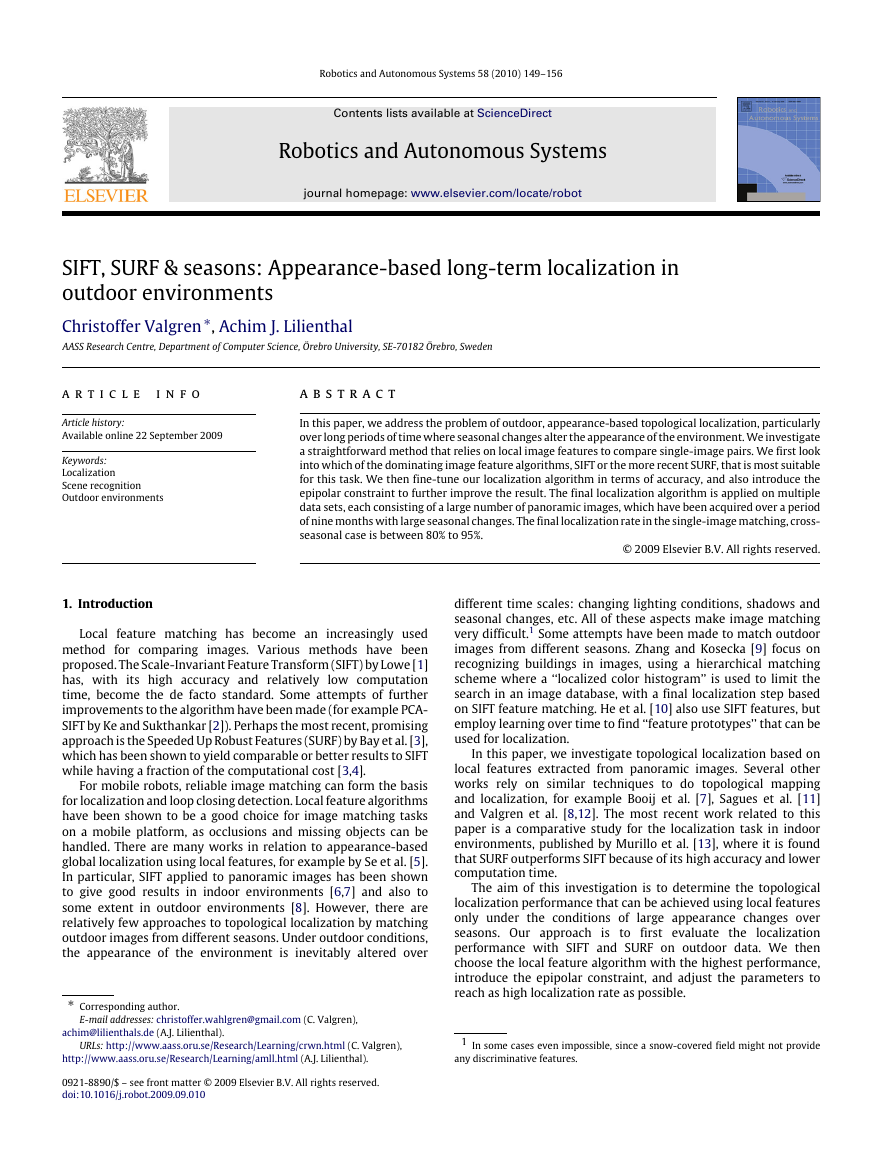

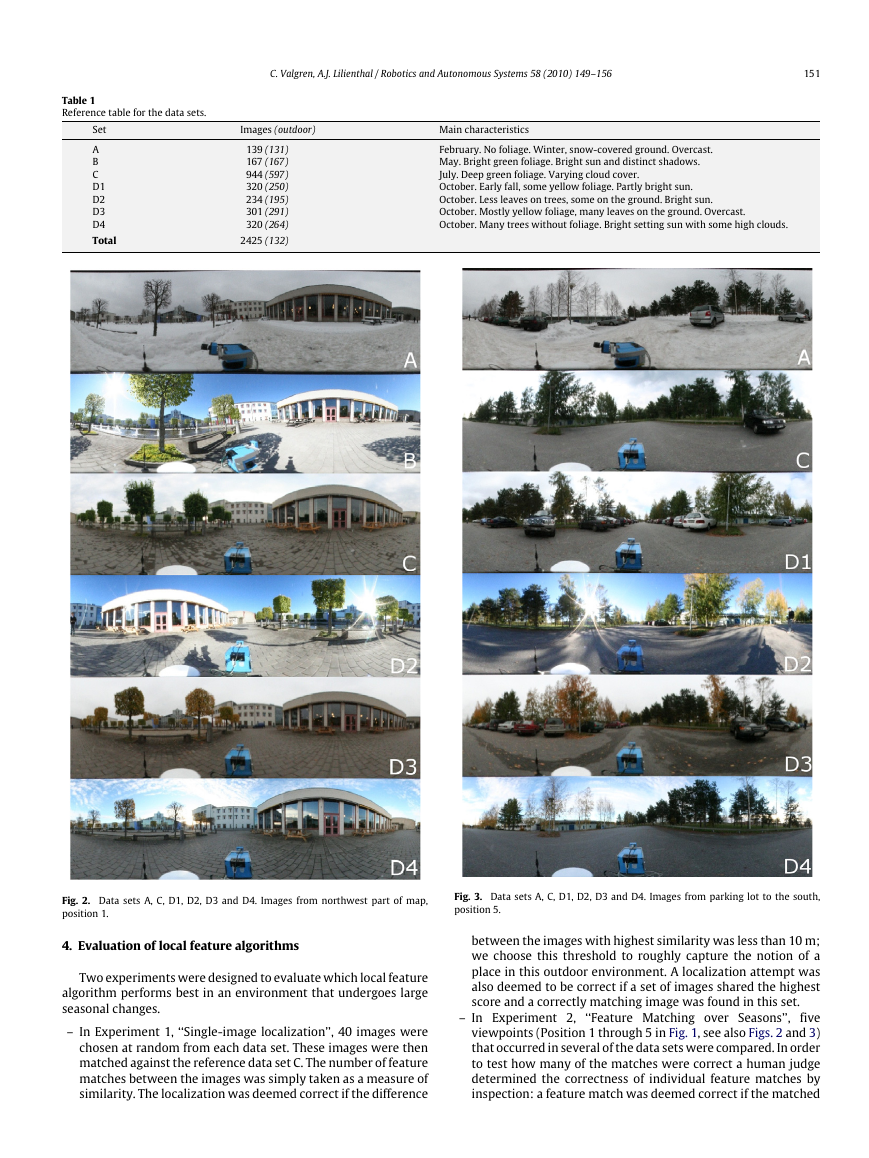
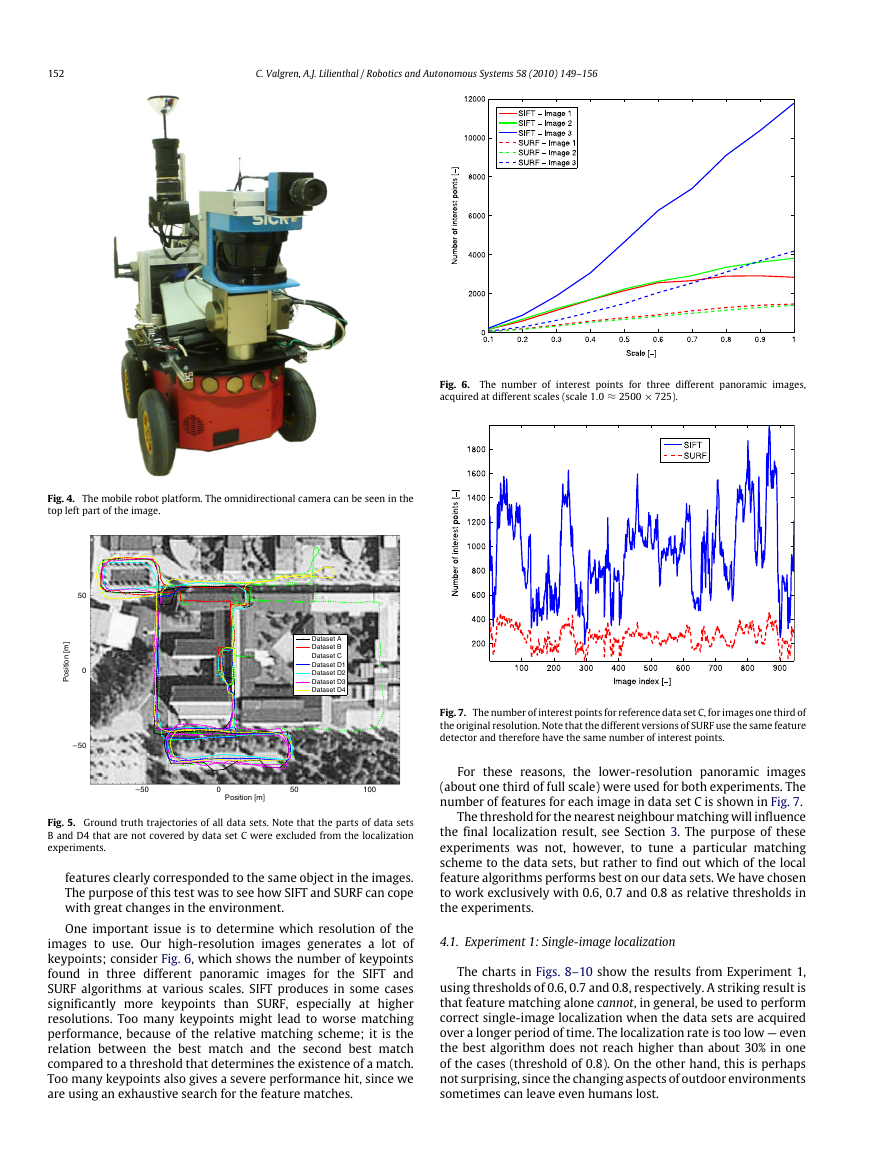
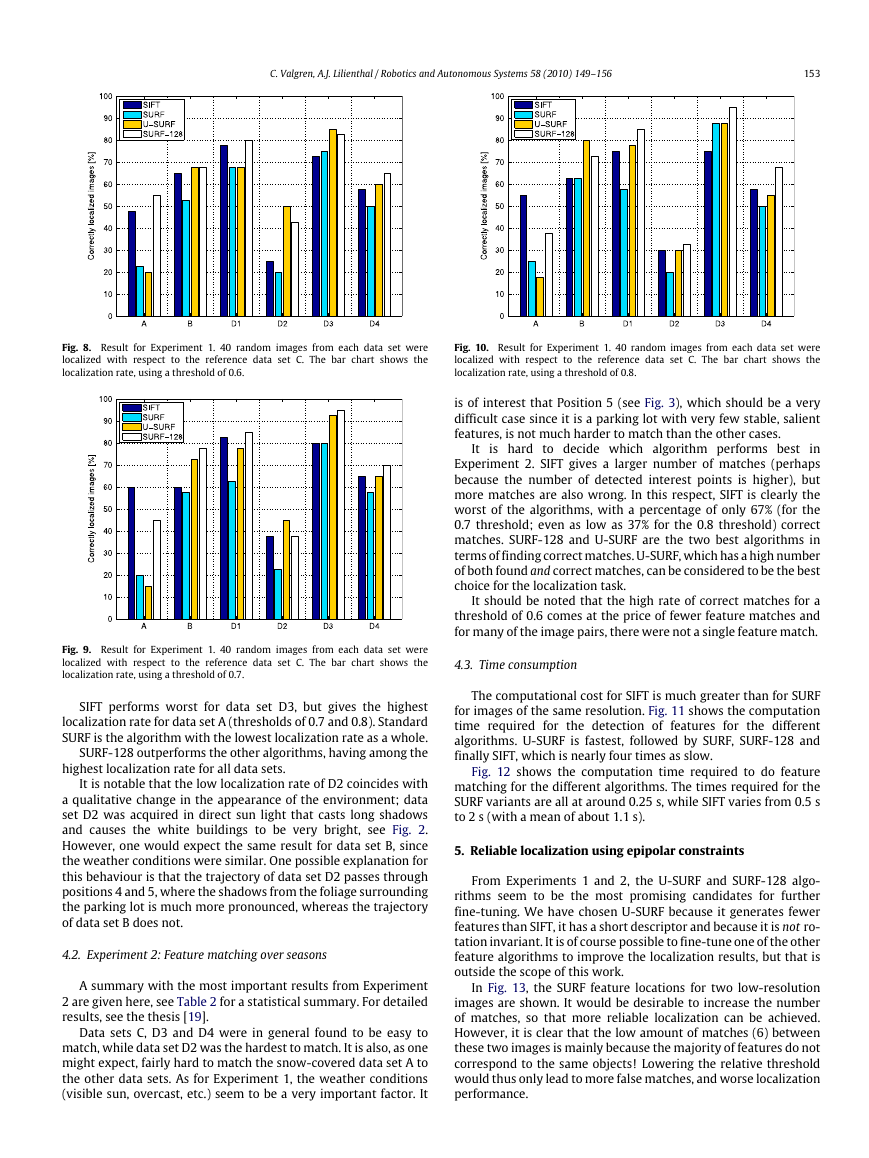

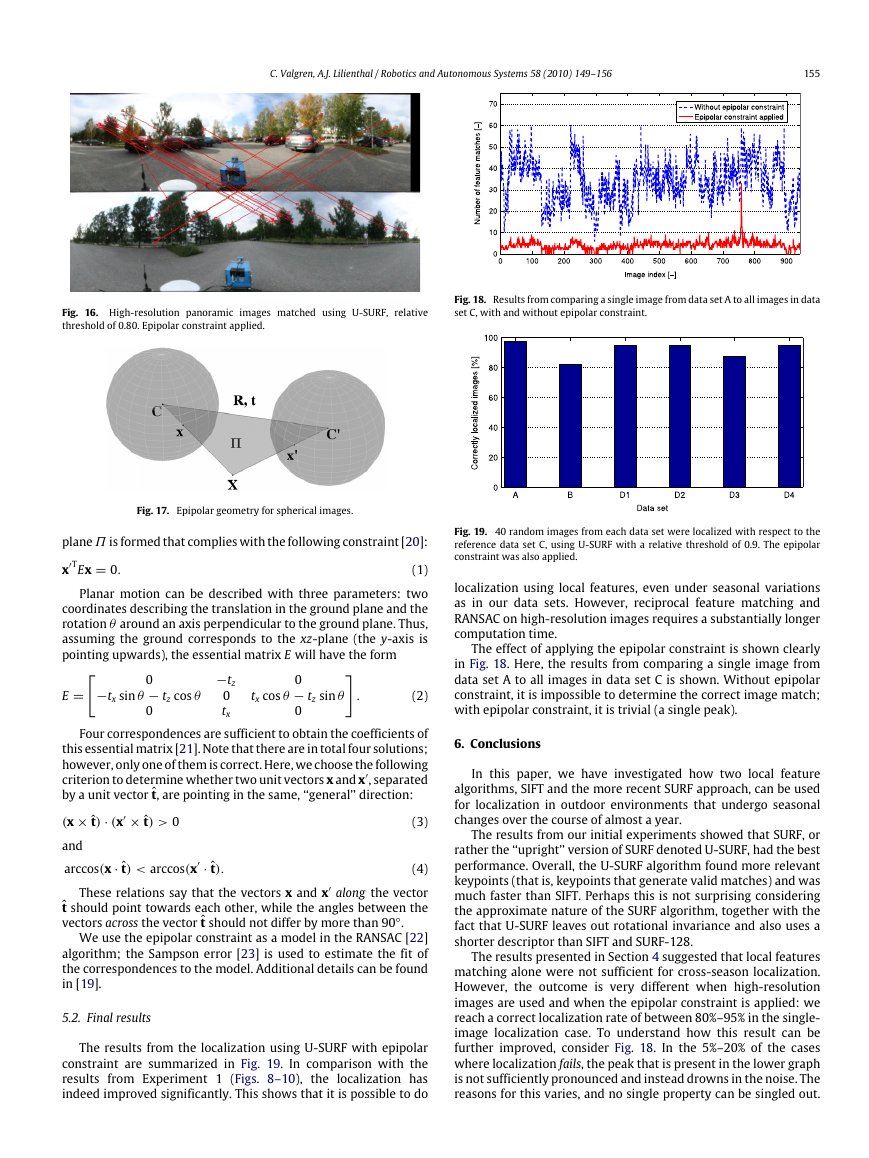
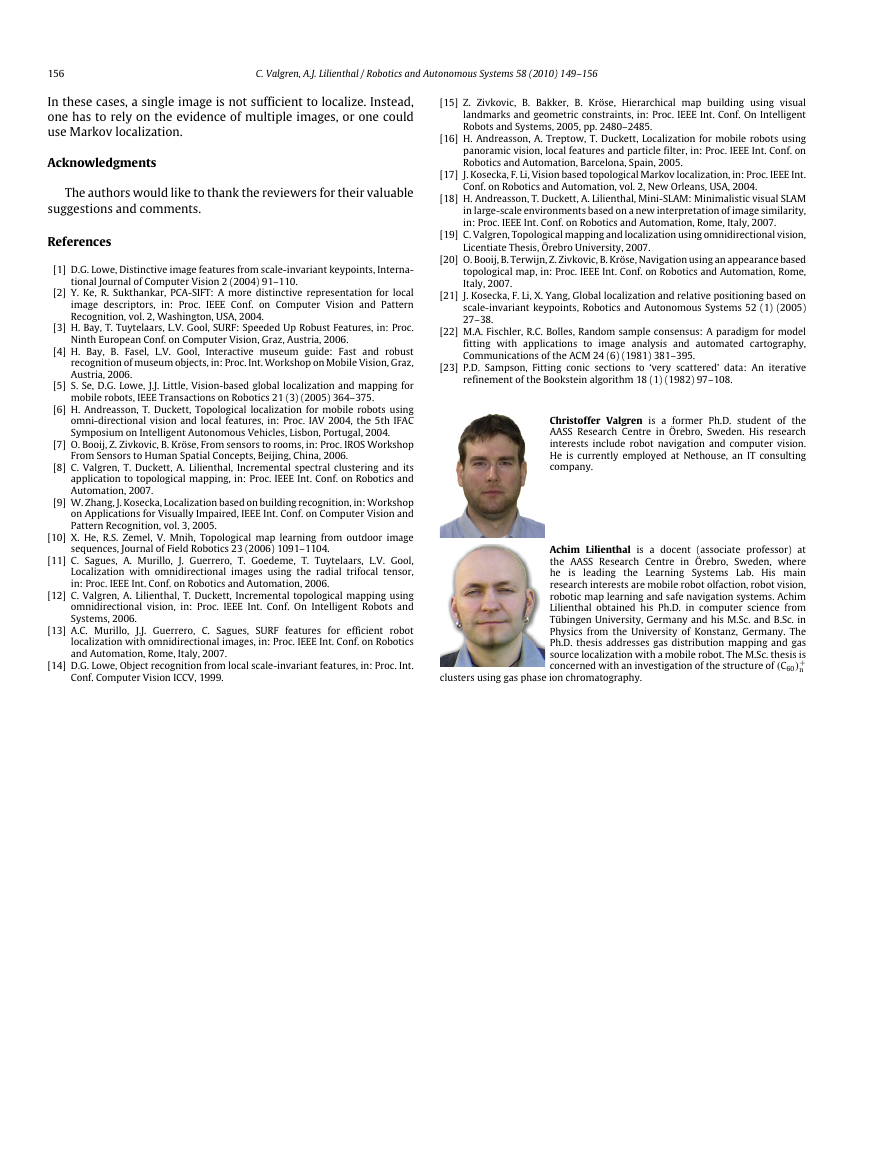








 2023年江西萍乡中考道德与法治真题及答案.doc
2023年江西萍乡中考道德与法治真题及答案.doc 2012年重庆南川中考生物真题及答案.doc
2012年重庆南川中考生物真题及答案.doc 2013年江西师范大学地理学综合及文艺理论基础考研真题.doc
2013年江西师范大学地理学综合及文艺理论基础考研真题.doc 2020年四川甘孜小升初语文真题及答案I卷.doc
2020年四川甘孜小升初语文真题及答案I卷.doc 2020年注册岩土工程师专业基础考试真题及答案.doc
2020年注册岩土工程师专业基础考试真题及答案.doc 2023-2024学年福建省厦门市九年级上学期数学月考试题及答案.doc
2023-2024学年福建省厦门市九年级上学期数学月考试题及答案.doc 2021-2022学年辽宁省沈阳市大东区九年级上学期语文期末试题及答案.doc
2021-2022学年辽宁省沈阳市大东区九年级上学期语文期末试题及答案.doc 2022-2023学年北京东城区初三第一学期物理期末试卷及答案.doc
2022-2023学年北京东城区初三第一学期物理期末试卷及答案.doc 2018上半年江西教师资格初中地理学科知识与教学能力真题及答案.doc
2018上半年江西教师资格初中地理学科知识与教学能力真题及答案.doc 2012年河北国家公务员申论考试真题及答案-省级.doc
2012年河北国家公务员申论考试真题及答案-省级.doc 2020-2021学年江苏省扬州市江都区邵樊片九年级上学期数学第一次质量检测试题及答案.doc
2020-2021学年江苏省扬州市江都区邵樊片九年级上学期数学第一次质量检测试题及答案.doc 2022下半年黑龙江教师资格证中学综合素质真题及答案.doc
2022下半年黑龙江教师资格证中学综合素质真题及答案.doc